Species Spotlight: Seed Propagation of the Texas Ebony Tree
The Texas Ebony Tree is a member of the legume family, displaying waxy green leaves that defy drought conditions and high temperatures with ease. Mature trees can reach heights of up to 30 feet or more, casting a broad spread of shade beneath their canopies. Blooming from late spring to summer, this tree showcases clusters of fragrant, yellow flowers that attract pollinators like bees and butterflies. In the fall, it produces dense, woody seed pods that contain several seeds, which play a crucial role in its propagation.
Prefer learning from videos?
Click the video image to learn how to propagate from seed.
Propagating the Texas Ebony Tree can be an enjoyable endeavor for any gardening enthusiast. Cutting propagation is less common due to the hardiness of the tree's wood but may be viable with appropriate rooting hormones and conditions. The most effective method for propagation involves seed germination.
Growing from Seed
Step 1) Seed Collection: Wait for the seed pods to dry on the tree before harvesting them. This ensures the seeds are ripe for planting.
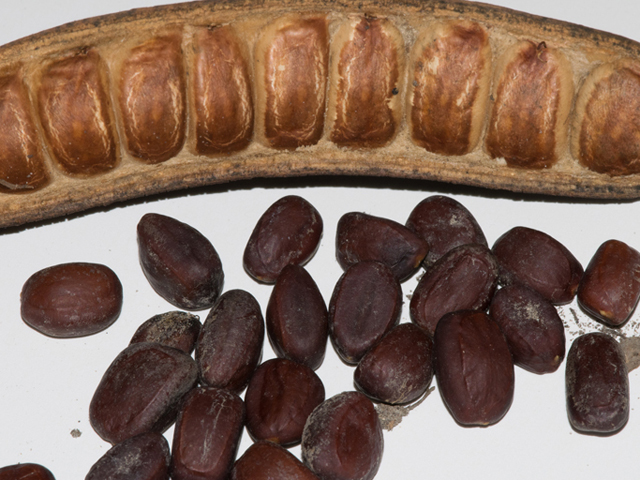
Soak seeds a day or so before planting to aid germination.
Photo by Sally and Andy Wachowski, courtesy LBJ Wildflower Center.
Step 2) Preparation: Soak the seeds in water for at least 24 hours to soften their hard outer shell and promote germination.
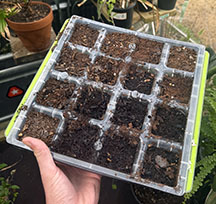
Step 3) Sowing: Plant soaked seeds in individual pots filled with well-draining soil mix. Sow them about an inch deep and water moderately.
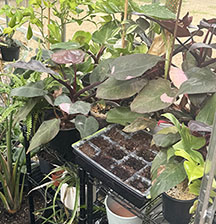
Step 4) Germination: Place pots in a warm area with plenty of sunlight. Seeds typically germinate within 3-4 weeks if kept consistently moist.
Caring for the new tree
- Watering: While established trees are drought-tolerant, regular watering during their initial growth phase supports healthy development. Reduce frequency once the tree matures.
- Soil: Preferring well-drained soils, Texas Ebony Trees aren't picky about soil type but do appreciate occasional fertilization to support growth (always test soil in your landscape before adding fertilizer).
- Pruning: Prune in late winter or early spring to maintain the desired shape and remove any damaged or diseased branches.
- Pests/Diseases: Generally resistant to pests and diseases. Keep an eye out for common issues like root rot (in overly moist conditions) to ensure your tree remains healthy.
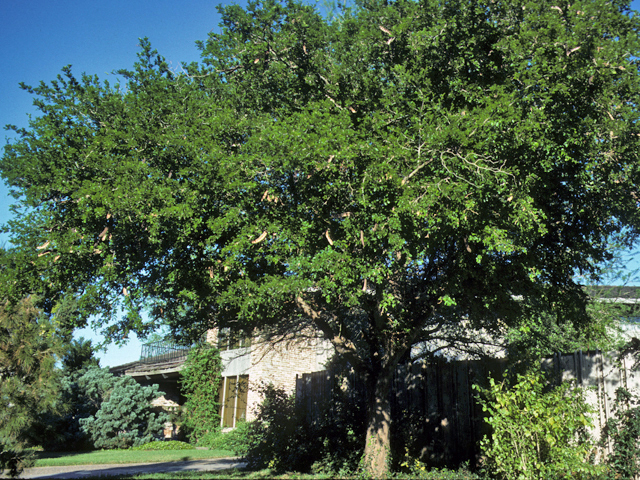
Texas ebony can grow up to 30 feet tall.
Photo by Sally and Andy Wachowski, courtesy LBJ Wildflower Center.
A Valuable Species
Beyond its undeniable utility and beauty in landscaping projects, the wood of the Texas Ebony Tree holds significant value. Known for its density and fine texture, it's popular among woodworkers for making furniture and decorative items.
Moreover, this tree plays a vital role in its ecosystem by providing habitat and food sources for various bird species and other wildlife. Its presence contributes greatly to biodiversity conservation efforts in regions suited to its cultivation. Planting a diverse range of species is an important part of a healthy ecosystem.
In gardens or landscapes where space and environmental conditions allow, introducing a Texas Ebony Tree promises not only aesthetic enrichment but also practical benefits such as shade and wildlife support. This resilient tree stands as a testament to nature's adaptability, making it an outstanding choice for both conservationists and homeowners alike.
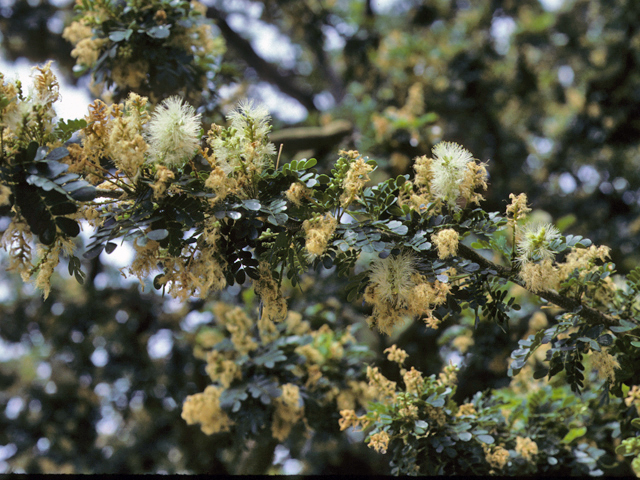
Texas Ebony flowers look like small puffballs.
Photo by Sally and Andy Wachowski, courtesy LBJ Wildflower Center.
In conclusion, whether you're drawn by its practical benefits or simply its serene beauty, the Texas Ebony Tree offers something valuable for everyone. With proper care and propagation efforts, this remarkable tree can thrive for generations, enriching landscapes and ecosystems alike with its majestic presence.
by Zane Williams, Urban Forestry Council Intern
Additional information available at the Texas A&M website.

This information is sponsored by the City of Austin. Learn more about trees and resources at the Tree Information Center!
